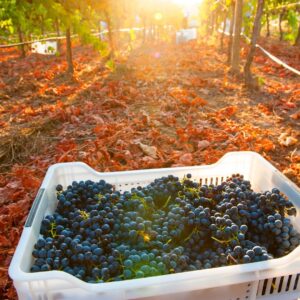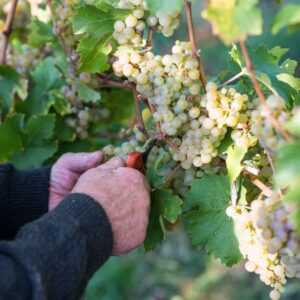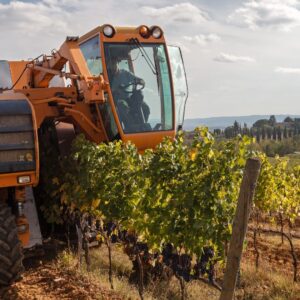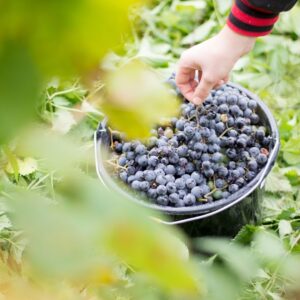Wine Grape Harvest
The wine grape harvest is a time-honored tradition that has existed for centuries. As we continue celebrating 50 years of Prospero Grapes, we felt it only right to take a closer look at the harvest, specifically what goes into it and how it works.

Harvest Time
Late summer through early fall is harvest time for wine grapes in the Northern Hemisphere. In the Southern Hemisphere, the harvest takes place from February to April. Harvest windows can vary somewhat based on the specific wine grape varietal which are determined by ripeness (measured in sugar content), flavor profiles, and tannin levels. Regardless of your region, late-harvest grapes picked months after the traditional harvest can offer special flavor profiles and aromas.

Sequence of Wine Grape Harvest
Harvesting grapes may seem like a large, unwieldy undertaking, but wine growers and winemakers have it down to a science. The wine grape harvest typically starts with grapes that create sparkling wine varietals such as Chardonnay and Pinot Noir. The harvesting of these sparkling flavors is completed first because it ensures the grapes will retain low levels of sugar.
From there, wine growers will begin harvesting early-season white wine grapes like Sauvignon Blanc and Riesling. These grape varieties are typically lower in sugar and higher in acidity.
After the early-season white wine grapes are harvested, it’s time to move on to the red wine grapes. These are crushed after white grapes because they require more time on the vine to reach ideal ripeness. Patience is key when harvesting red wine grapes as rushing the process can result in wines that are too high in acidity and lack complexity.
The final grapes left on the vine are the dessert wine grapes. Also known as ice wine, these grapes are left to freeze on the vine which concentrates their sugars. Dessert wine grapes are typically harvested in the middle of winter and can be made into a wine that is both sweet and high in alcohol.

Harvesting Methods
Wine growers and winemakers have a few different options when it comes to harvesting grapes. The traditional method is to use your hands to remove the grapes from the vine. This is a more labor-intensive option, but it allows wine growers to be very selective about which grapes are harvested. Perhaps most importantly, by using your hand, you can better protect the grapes’ skins from being broken.
Despite the precision of hand-harvesting, many wine growers have also begun using machines to speed up the wine grape harvest. This is a more efficient way to harvest wine grapes that is quite effective for large vineyards.

Factors To Consider
When harvesting your grapes, you need to be conscious of three factors: the specific variety of the grape, weather, and the time of cutting the fruit off the vine. Each of these factors can influence the wine-making process and the flavor profile of the wine.
As we mentioned before, some wine grapes are better suited for early harvesting while others do better when left on the vine longer. You need to know which wine grape is best suited for the wine you want to make. The exact date of the harvest can vary depending on the grape’s ripeness. The sugar content, acidity levels, and tannins all play a role in when the grape is ready to be harvested. A wine grape’s ripeness can also be affected by the weather.
A cool and moist winter is ideal for your vineyard. But a spring that is heavy with moisture can lead to problems. By the time spring and summer arrive, you will want cool nights and temperate days with dry weather. The last thing you want is for your wine grapes to become overripe and begin to raisin on the vine.
You will want to minimize your grapes’ astringency, so cutting them from the vine in the cool hours of the morning is a great practice to get into. This allows you to maximize the time the grapes spend in cool temperatures which will help preserve their acidity levels. Preserving crispness is key to making wine because grapes shouldn’t be smushed or gently split—they should be crushed.
For 50 years, Prospero Grapes has looked forward to harvest season. We love nothing more than to see our wine grapes reach their full potential and be made into delicious wine. As we toast our 50th anniversary, we cant help but dream of all the wonderful vintages yet to come! Contact us today!
